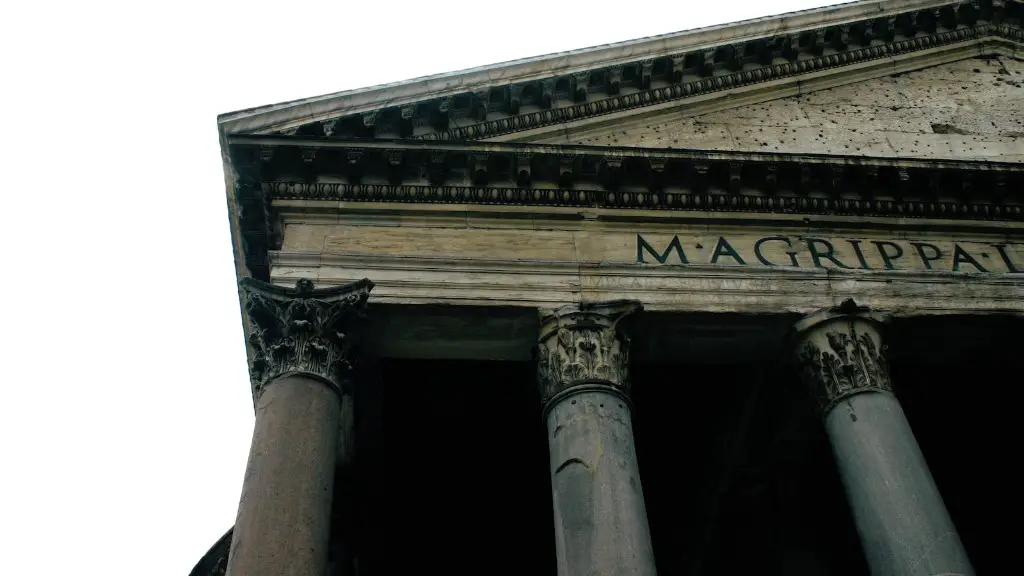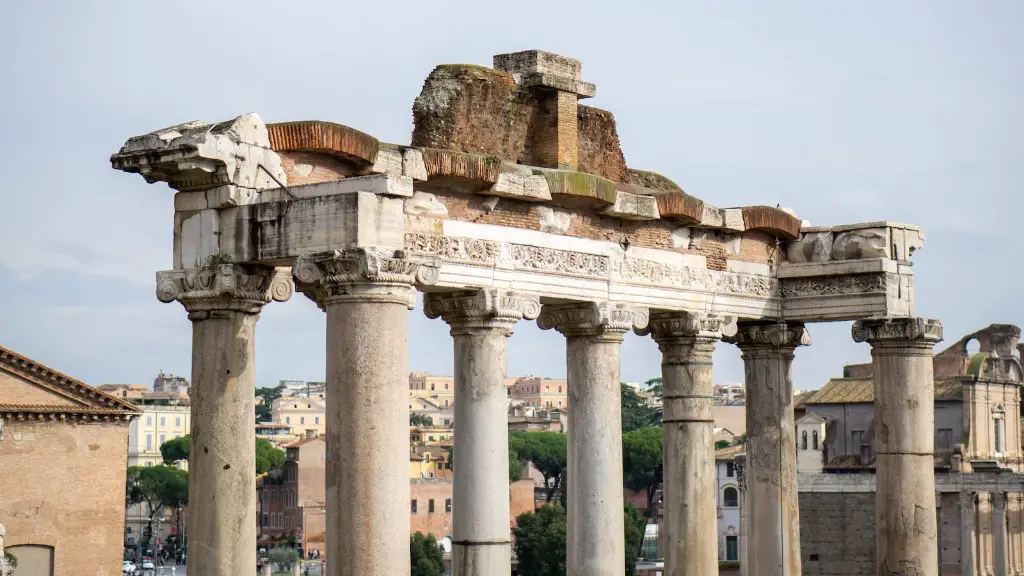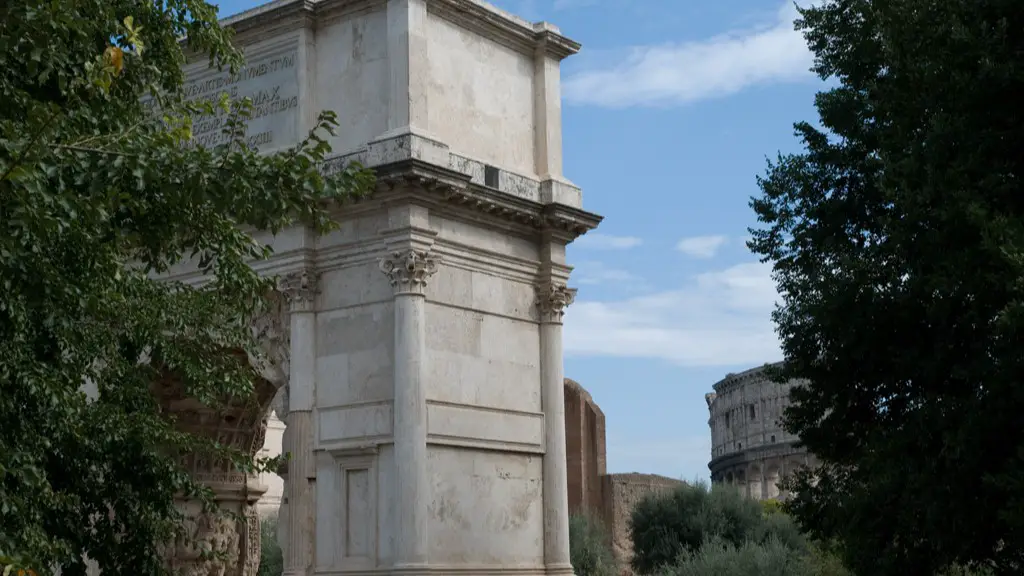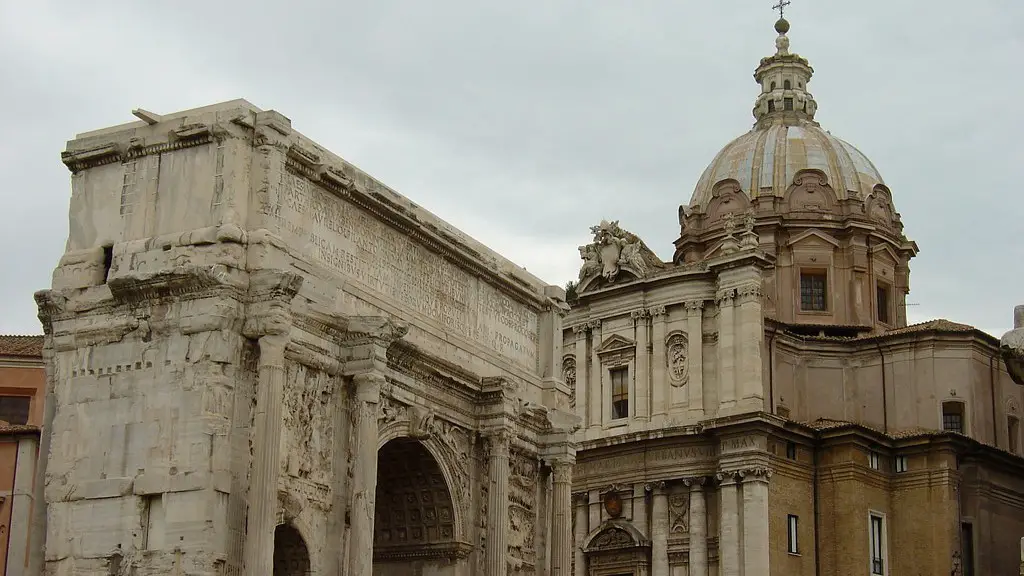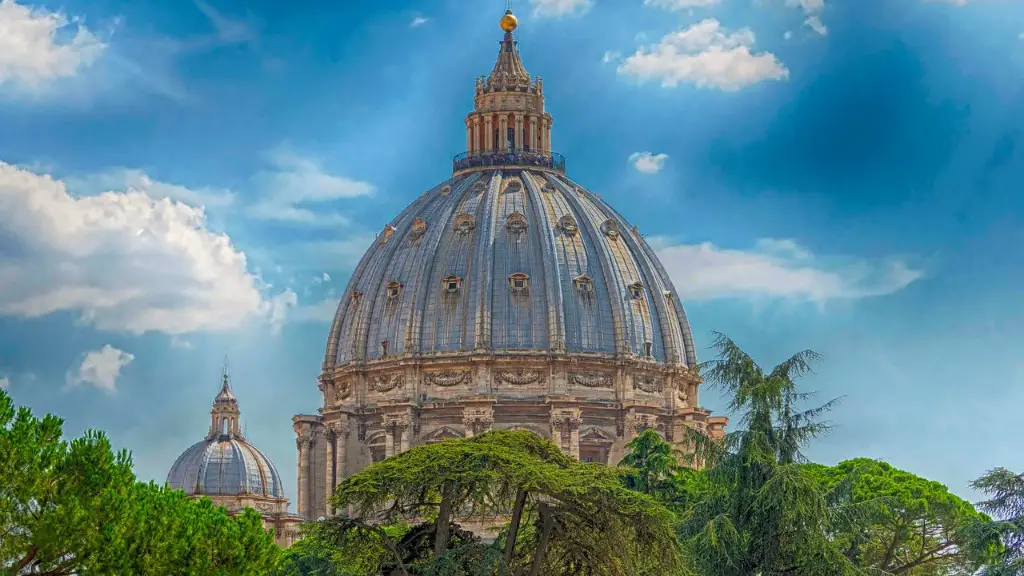In ancient Roman culture, gods served an incredibly important role. The singular most important deity was probably Jupiter, the top-ranking god in Roman mythology who was faithfully worshipped by Romans for well over 600 years. Often referred to as the “king of the gods,” Jupiter was associated with the sky, weather and thunder, and was thought to be the supreme sign of power and authority. He was an important symbol of the Roman state and its laws and traditions, and he was frequently invoked in Roman prayers and official decrees.
In fact, having Jupiter’s favor was believed to be indispensable to a Roman military victory. He was also believed to protect Rome and serve as its guardian. The Romans celebrated multiple festivals and holidays in honor of Jupiter, and built multiple temples in his name. One of the most well-known temples is the one on the Capitoline Hill in Rome; consecrated in 509 BC, it served as a place of worship for hundreds of years.
Jupiter is the son of Saturn and Ops, and the brother of Neptune, Juno and Vesta. His symbols include the thunderbolt and oak tree, and he is often shown wielding a staff. According to one Roman myth, Juno stole Jupiter’s thunderbolts and fled to the top of Mount Olympus, where Zeus chased her and won her back.
In addition to Jupiter, there were a number of lesser-known gods who also played an important role in Roman mythology. Examples include Mercury, the patron god of merchants and travelers; Mars, the god of war; and Venus, the goddess of love and beauty. Other important divinities include Minerva, goddess of wisdom and war; Diana, goddess of hunting and wild nature; and Janus, god of beginnings and endings.
In Roman mythology and literature, gods and goddesses were often given special powers and abilities, which made them extremely powerful. They would intervene in human affairs, rewarding the righteous and punishing the wicked. They were also believed to be immortal and to live in the heavens, and they were accorded great reverence and respect by the Roman people.
The importance of the gods and goddesses in the Roman religion declined over time, but there were still some gods who were venerated and worshipped up until the fall of the Roman empire in the 5th century. Jupiter was still an important part of Roman culture during this time and continued to be revered by Romans as the highest-ranking and most powerful deity until the decline of the empire.
The Temple of Jupiter
The Temple of Jupiter was one of the most important religious sites of the Roman Empire. Extant sources attest to the fact that prior to its destruction on 29 July 83 BC, it was one of the most highly venerated temples in Rome. The Temple itself was said to have been built by King Tarquinius Priscus and was eventually dedicated to the cult of Jupiter Optimus Maximus, the greatest of all gods in Roman mythology.
Constructed in the Capitoline Hill, the temple played a significant role in the ritual life of ancient Rome. Its three main rituals included a procession of the “Great God” from his temple preceded by the chief magistrate and accompanied by music, a sacrifice of victims, and a magical rite called evocatio. These rituals were meant to reflect the centrality of Jupiter as the head of Roman religion.
The Temple of Jupiter also served as the meeting place for important political and religious agendas. Politicians would often consult with the sacred oracles to which the temple had access, while the Vestal Virgins – the priestesses of Vesta who were responsible for keeping the sacred fire alive – were based at the Temple. This further cemented Jupiter’s status as the most important god in Roman religion.
The Cult of Jupiter
The worship of Jupiter was an integral part of Roman culture. Many Romans would make prayers and offerings to the god, and his voice was seen as a representation of divine judgement. One of the most popular festivals dedicated to Jupiter was the Ludi Romani, which was celebrated in mid-September and consisted of chariot races, theatrical performances, and lavish feasts to honor him.
The ara maxima, or “Great Altar”, was a large disk-shaped altar built to Jupiter on the Campus Martius, about 300 m from the Capitoline Hill. Dedicated by King Tarquinius Priscus in the 6th century BC, it was likely one of the earliest cult sites for Jupiter and was an important sign of his divine authority. Sacrifices and offerings were presented to the ara maxima from all over Rome on an annual basis in a ritual known as the Lectisternium.
Jupiter was also venerated through the production of coins, which depicted him as powerful and imposing. As the supreme god of Rome, his image was used to make a powerful political statement of strength and power, as well as reinforcing his role as the ultimate leader. Coins with his name inscribed were also distributed to religious sites as a token of popular endorsement.
The Significance of Jupiter
Jupiter was one of the most important gods of the Roman pantheon and symbolized the power and authority of the Roman state for over 600 years. His temple, cult, and coinage provided important symbols of Roman culture, law, and traditions and served to communicate divine judgement and authority in the everyday lives of its people.
Even today, the name Jupiter, the symbols associated with him, and the rituals held in his honor, remain symbolic of Rome’s turbulent history and its lasting legacy. As the king of the gods, Jupiter was and continues to be viewed as a powerful symbol for Rome and its centrality within western civilization and culture.
Jupiter in Popular Culture
Jupiter’s importance in Roman culture has been acknowledged in literature, art, and popular culture in the centuries since the fall of the Roman empire. He appears in works such as Virgil’s Aeneid and Ovid’s Metamorphoses, while his thunderbolts are frequently used as symbols of power in artistic works. He is also depicted in a variety of sculptures, paintings, and mosaics.
In recent years, Jupiter has continued to appear in works of popular culture. Films such as Clash of the Titans (2010) and Thor: The Dark World (2013) feature him prominently, while the planet Jupiter is a major plot point in the novel and film, Contact (1997). His presence in these works of popular culture demonstrates the lasting impact of his relevance in Roman mythology.
The Connection with Other Cultures
Jupiter’s importance in Roman culture extends beyond Roman borders. He is also an important figure in other ancient cultures, particularly in the Greco-Roman world. The Greek god Zeus is identified with Jupiter, and in many ways, the two gods share several similar features and characteristics.
Though the worship of Jupiter declined in Rome and other parts of the Roman empire, its influence remains visibly present in countries such as France, The Netherlands, and parts of Germany. In these countries, there are churches, chapels, and shrines dedicated to this important god, further demonstrating the legacy of his significance.
Conclusion
Jupiter was the most important god in ancient Roman mythology and culture. He was the top-ranking deity and was believed to represent the power and authority of the Roman state. His temple, cult, offerings, and coinage were important symbols of the Roman religion and provided clear evidence of his power and divine judgement within the Roman religious world.
Though he is no longer worshipped as fervently, his influence is still seen in literature, artwork, and popular culture, as well as in the influence he had on other cultures. Jupiter remains a powerful symbol of Roman culture and of its enduring legacy in western civilisation.
